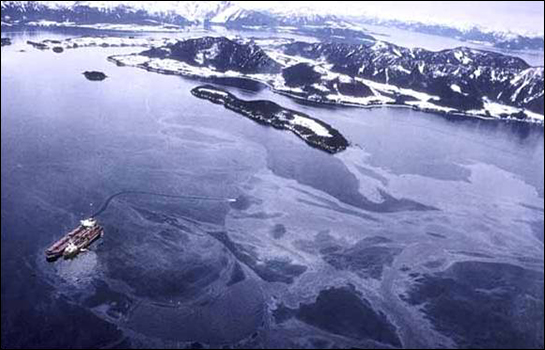 |
|||||||||||||||||||||||||||||||||||||||||||||
The Gulf of Alaska is part of the North Pacific Ocean. It stretches from the Alaska Peninsula in the west to the islands of Alaska’s southeast. The coast includes mountains, glaciers, forests, towns, and cities. The waters are full of life and support one of the country’s largest fishing industries. Powerful currents circulate marine life and bring up nutrients from deep waters. Seabirds and marine mammals feed in the many bays and estuaries of the gulf. These areas also provide nursery habitats for fish. So many factors influence the Gulf of Alaska! The major factors include:
Click the image below for a closer look at some of these factors. Be sure to use the vocabulary list at the right if you run into any terms you are not familiar with! Thousands of workers, volunteers, and community members worked together to clean up the spill. However, oil still remains hidden below the sand and rocks on the beaches and scientists want to know what this means for the Gulf of Alaska ecosystem. Since 1989, scientists have continued to study how the Gulf of Alaska's ecosystem is responding to the Exxon Valdez oil spill (EVOS). All of Earth’s ecosystems are affected by both natural changes and human activities. After the 1989 spill, scientists realized something important. We did not have enough data to fully understand how complex the northern Gulf of Alaska ecosystem really is. We were lacking what researchers call “baseline” data. A baseline is a measure of how things are (or were) at a particular time. Without baseline data, it is hard to understand how ecosystems respond to changes in environmental conditions, which can occur naturally or as a result of human activities. Think of a baseline like this: If you measure your heartbeat when you are resting, it’s beating regularly and probably pretty slowly. This is your baseline to measure from. If you suddenly run up a long flight of steps, your heart starts beating much faster and you are probably out of breath. If you count your heartbeat now, you can measure how much it changed from the baseline. That change is the impact caused by running up the steps. For example, in the Gulf of Alaska it is difficult to know exactly how the 1989 oil spill changed sea otter population numbers. This is hard to measure because baseline data for the number of sea otters living there before the spill doesn't exist. In order to improve our understanding of baselines and change for the entire Gulf of Alaska ecosystem, the Exxon Valdez Oil Spill Trustee Council created and continues to fund the work of the Gulf Watch Alaska long-term monitoring program. Gulf Watch Alaska is a team of scientists and researchers who work together to measure and monitor different parts of the ecosystem in the spill area. They compare their data to get a “bigger picture” about how the ecosystem works and how healthy it is. VIDEO: Introduction to Gulf Watch Alaska
Introduction to the Gulf Watch Alaska ecosystem monitoring program. (1:14) The Gulf Watch Alaska monitoring program is organized into four related ecosystem monitoring components. Click below to discover each component.
|
Who is watching the Gulf?
|
||||||||||||||||||||||||||||||||||||||||||||
 |
|||||||||||||||||||||||||||||||||||||||||||||











